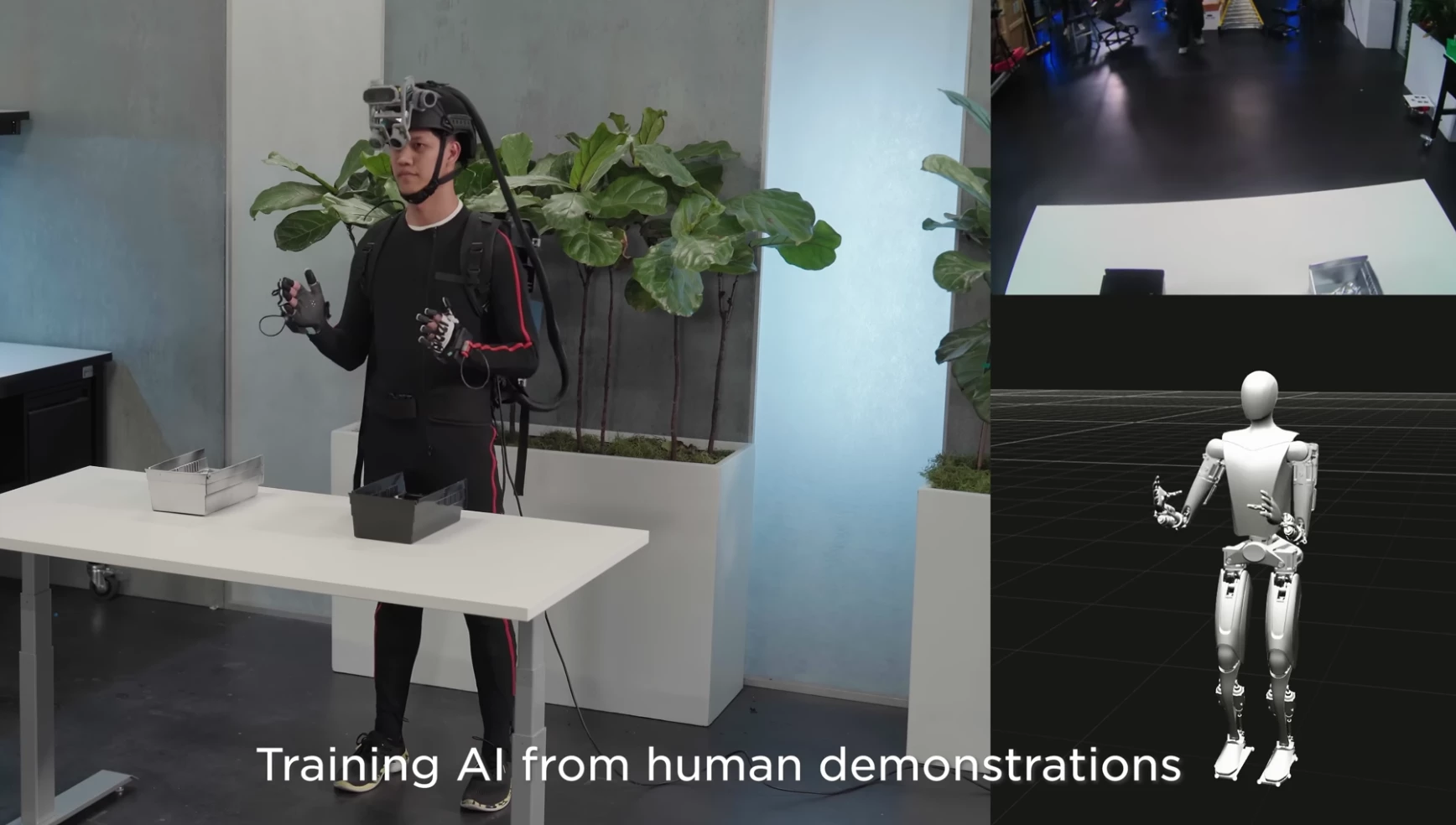At Tesla's 2023 shareholders meeting, Elon Musk showed some new video of the Optimus robot he believes will represent the vast majority of the company's value in the future – as well as the method through which the development team is training the AI.
There are now at least five Optimus robot prototypes built and capable of walking, using motors, controllers and electronics all designed and manufactured by Tesla. The general-purpose robot is learning to sense the world around it, map it and navigate it using systems developed for the self-driving Autopilot systems in the company's electric cars.
"As Full Self Driving gets closer to generalized real-world AI, that same software is transferable to a humanoid robot" said Musk. "Humans can obviously walk around with our arms and legs, but we can also drive a car, fly a plane, steer a boat, ride a horse. If you have a generalized understanding, a generalized real-world AI, which is what we are developing for Full Self Driving, it can be transferred to basically anything. Optimus will use the same FSD computer as the car."
"Very few people, even in the AI community, appreciate just how much capability Tesla has in AI," he added. "It's by far the most advanced real-world AI. There's no-one even close. Reality has the most degrees of freedom."

The video shows a quick look at some sort of leg design, demonstrating both a degree of explosive leaping power from the electric actuators, and also how sensitive the system can be, with a rubber foot coming down on an egg, but stopping before breaking it.
It also shows a few glimpses of the Optimus team training the robot, using a similar monkey see, monkey do technique as the Sanctuary AI team we featured yesterday – but apparently minus the telepresence component. Operators wearing motion tracking suits and head-mounted cameras perform the kinds of basic tasks Tesla hopes to train the bots for, and their actions are replicated by a virtual model of the robot, which learns common movement patterns.
That's interesting to note, as there's a fair difference between an operator simply doing the task in person, with the robot learning from a virtualization of the process, and Sanctuary's approach of having operators drive the robots directly via telepresence, meaning that the operator is seeing only what the robot can see, and feeling only what the robot can feel – and the robot's own hands are performing the job under human control.

Intuitively, Sanctuary's approach seems like a better one to me, delivering better quality data from which the AI can learn. It means the human brain is responding to exactly the same stimuli as the robot is encountering in the real world, where Tesla's apparent virtual approach can track the human motion of picking things up, for example, but it doesn't supply any data from the robot itself alongside the process.
Either way, it seems Optimus is learning to pick items up by itself – no small feat, since this requires the bot to see objects, map out an idea of their 3D shape, figure out how best to approach them, then make all the appropriate motor movements and angle changes to grab and lift them.
"Optimus is not a deep thinker at this point," said Musk. "Optimus is still figuring out how to do basic stuff. It couldn't cook some eggs or something quite yet. We need to get Optimus to the point where it has reasonable agility and can do basic things. We're aiming for it to start off doing simple tasks that are boring and repetitive, or dangerous – basically, jobs people don't wanna do. That's our goal, and I'm confident we'll achieve that goal."

"Then we've gotta figure out how to make it at scale," he continued. "We've gotta figure out how to make it safe. The robot's gotta have a local means of turning it off... Safety is going to be extremely important, I can't emphasize that enough. But right now, it's not at an intelligence level where it's pondering questions like Mars. Perhaps it will be, one day."
Musk repeated his belief that the Tesla Bot will be far bigger than the car business. "If you had a generalized humanoid robot, what would be the effective ratio of robots to humans? Because I think basically everyone would want one. Maybe people would want more than one. Which means the actual demand for something like Optimus – if it really works, which it will – is I don't know, 10 billion units? It's some crazy number. It might be 20 billion units. It's a very big number, is what I'm saying, and a number vastly in excess of the number of cars. My prediction is that the majority of Tesla's long-term value will be Optimus, and that prediction I'm very confident of."
Nobody has accused Musk of lacking confidence, but it's certainly fun to watch the Tesla bot taking shape. We wonder how long it'll take before this machine – or any of its competitors – reaches the point where it's actually useful on a decent range of tasks. I suspect, given the general way AI trajectories seem to go, that once it reaches the point of being a little bit useful, it'll develop extremely rapidly from that point.
Check out a video below.
Source: Tesla






